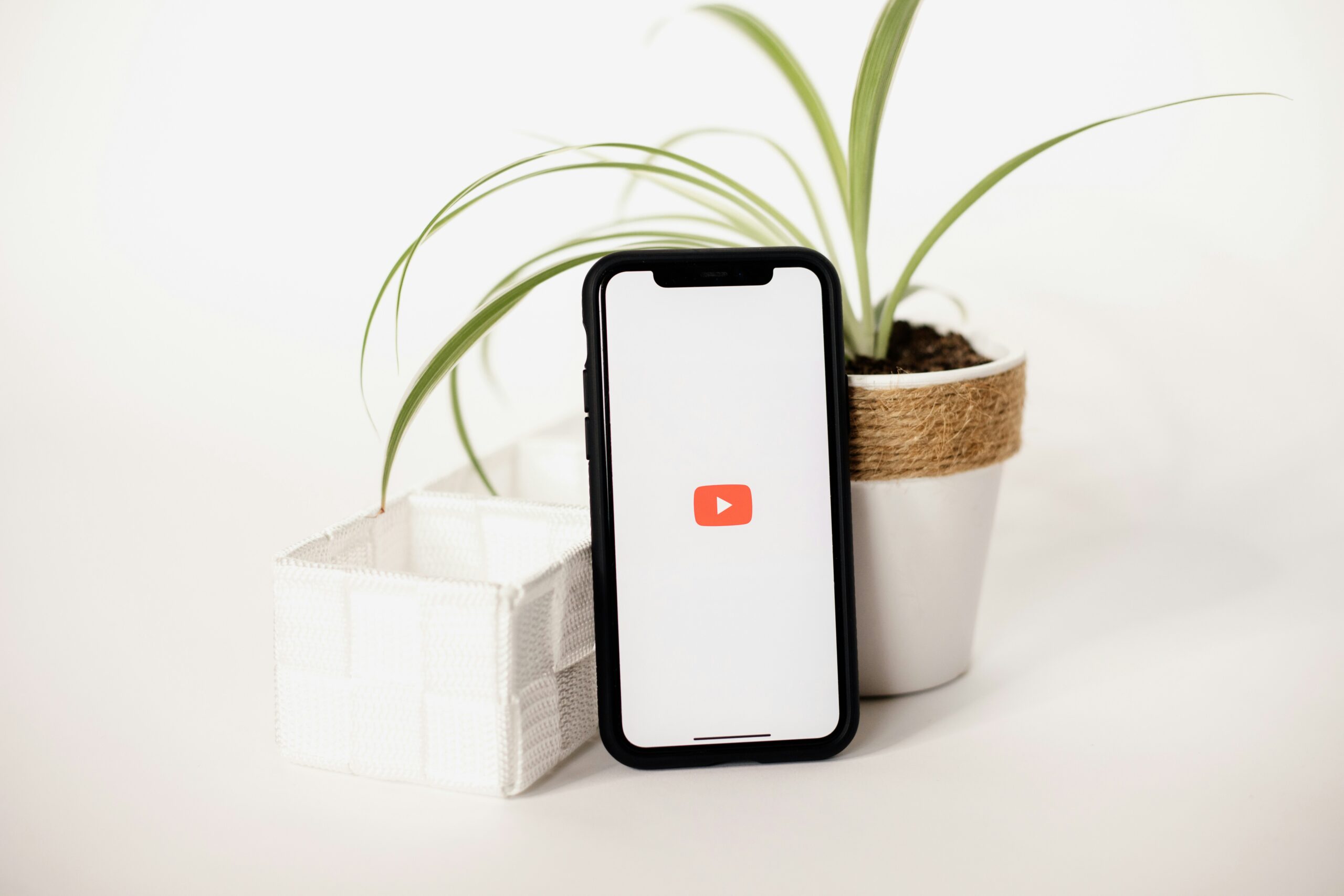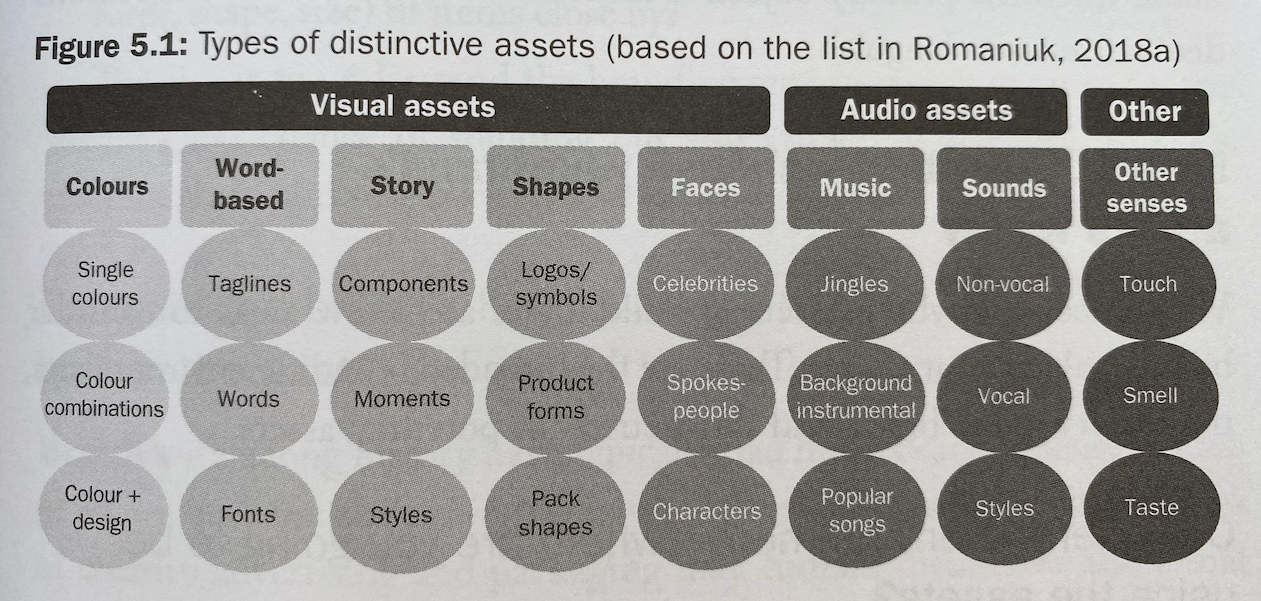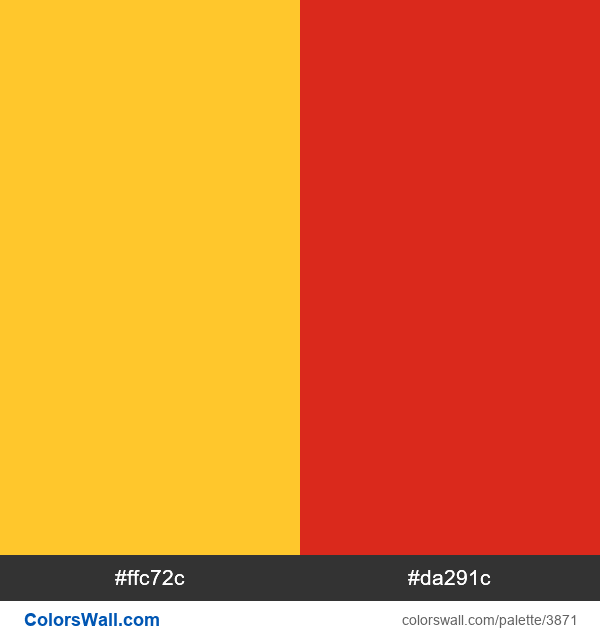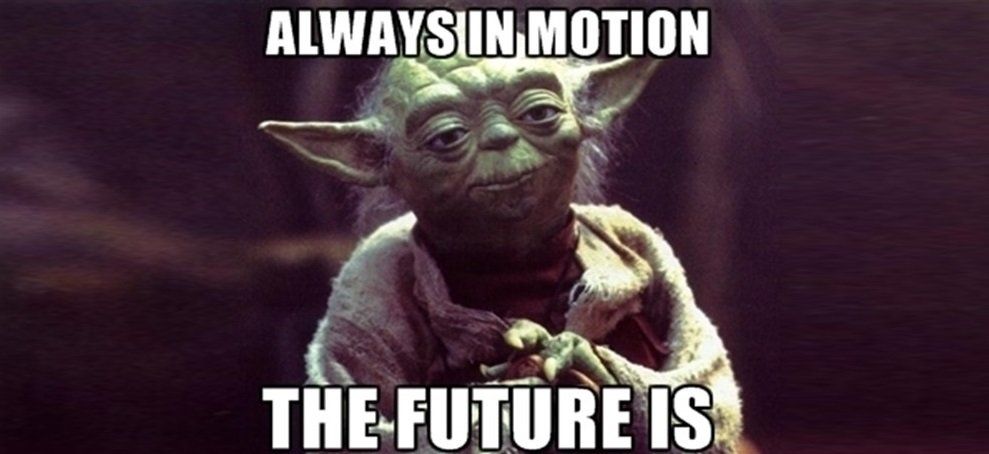Brand Ambassador or Brand Liability?
In recent years, the word influencer has become part of everyday language. Influencers are popping up across all industries like mushrooms after the rain and new ones appear daily. In marketing, it sometimes feels like if a brand doesn’t work with an influencer, it might as well not exist. But there’s a catch: many influencers promote multiple competing brands at the same time, which significantly reduces the effectiveness of these partnerships. As a result, audiences often fail to associate them with any one brand.
That’s where brand ambassadors come in. Not the kind who post once for a fee and move on to the next client, but those who genuinely believe in a brand and maintain a long-term connection with it. While influencers are great for reach, ambassadors bring trust—and no brand can survive today without trust. A well-structured brand ambassador program can be a valuable addition to your communication strategy—if you know how to set it up and what pitfalls to avoid.
In this article, we’ll break down what brand ambassadorship really involves and how it differs from influencer marketing. We’ll explore why this approach can be a great move for brands and also what can go wrong. Many companies tend to overlook their most important audience: loyal customers. It’s true that in brand awareness campaigns, they’re not the first priority. But they’re often the ones with the greatest potential to become true brand ambassadors.
What Does Brand Ambassadorship Involve?
A brand ambassador is typically someone who knows the brand well, has firsthand experience with it, and supports it even outside of paid campaigns. They use the brand’s products or services regularly, understand them in depth, and can speak about them with genuine authenticity. The role itself can take many forms — sometimes it’s a celebrity, other times a loyal customer. What matters most is that the partnership isn’t random but built on a relationship that benefits both sides.
Unlike influencers, ambassadors usually represent only one brand within a given category. Their goal isn’t broad reach, it’s depth. Ambassadors have a stronger bond with the brand and often participate in a wider range of activities—from product testing to providing internal feedback.
The key difference lies in the overall approach: influencers function as a marketing channel, while ambassadors are part of the community. An influencer speaks to the audience; an ambassador speaks from within it. And audiences are becoming increasingly skilled at telling the difference between what’s real and what’s staged.
Some examples? Internationally, think George Clooney and his long-term partnership with Nespresso, Serena Williams for Nike, or Zendaya for Lancôme. In the Czech Republic, examples include Lukáš Krpálek for Under Armour or Klára Vytisková, who has worked with several local design brands.
Audiences expect brands to be meaningful and authentic—and if they sense that an ambassador is just "playing a part," the effect is lost. That’s exactly why this model is becoming more sought-after—not because it offers greater reach than influencer marketing, but because its impact tends to be deeper and longer-lasting.
Photo by Collabstr on Unsplash
Why It (Can) Work
Let’s take a look at some of the key benefits a brand ambassador program can offer.
One of the biggest advantages is the previously mentioned authenticity. People are more likely to trust someone who genuinely knows and uses a brand long term. An ambassador with a strong personal story can feel far more authentic than any claim made in an ad campaign.
But it’s important not to overlook another key benefit: reach. Especially when an ambassador is part of a specific community or has their own follower base. Ambassadors often connect the brand with people who would be difficult to reach through traditional advertising—spreading brand awareness in an organic, hard-to-replicate way.
The third major benefit? Longevity. While a one-off influencer partnership can fade quickly, an ambassador stays with the brand longer—building it consistently across seasons and media.
As the platform MarketingWeek notes, ambassadors aren't a commodity—they’re a indicator. If a brand naturally attracts people who genuinely want to represent it, that’s a sign it’s doing something right. In that sense, ambassadors aren’t just “the face” of a campaign—they’re a real asset.
What If It Doesn’t Work Out?
It all sounds great in theory—a brand finds someone who truly loves it, and that person spreads the word. But reality is often more complicated. If a brand ambassador program is poorly executed, it can do more harm than good.
One of the most common and critical mistakes is choosing the wrong ambassador. And it’s not just about someone who doesn’t “fit the feed.” The real issue arises when the ambassador doesn’t align with the brand’s values or when their public image invites unnecessary controversy. Consistency and trust are key. If the ambassador is seen as just another hired face rather than a genuine fan, both authenticity and the impact of the partnership go out the window.
Another frequent problem is short-term campaigns without deeper connection. Brand ambassadors aren’t influencers for one-off Instagram stories. Worse yet is when those stories are followed by similar ones for other brands—especially if the ambassador is representing multiple brands at the same time. Some people “influence” across dozens of campaigns, but when the same face shows up in four different ads within a month, credibility and exclusivity suffer. Even more so on a small market like ours.
That’s why brands need full awareness of who else their ambassadors are working with. This ties into another common pitfall: a lack of control over communication. Yes, authenticity means letting ambassadors speak in their own voice. But if a brand doesn’t monitor how that voice reflects on them, things can easily go sideways. Without clear guidelines and expectations, messaging can become inconsistent or even damaging to the brand.
And finally, there’s one major issue that doesn’t get discussed enough: the absence of strategy. Launching an ambassador program without clear goals, measurable KPIs, or a solid plan is a recipe for failure. Ambassadors need to be meaningfully involved. It’s not enough to pick someone, send them a product, and hope for miracles.
Photo by Franck on Unsplash
When It Works—And When It Really Doesn’t
As with most things in marketing, the best way to illustrate a point is through real-world examples. Here are two stories with the same goal, but dramatically different outcomes.
Serena Williams x Nike
Serena Williams is an American tennis legend. She stands for strength, perseverance, and breaking boundaries—all values that Nike has consistently promoted and communicated over the years. Their partnership spans more than 20 years, and it’s not just about ad spots with catchy slogans. Together, they create powerful narratives that resonate—like the “Never Done Evolving” campaign, in which Nike used AI and machine learning to simulate a match between 17-year-old Serena from 1999 and 35-year-old Serena from 2017. The campaign highlights her evolution as an athlete and showcases how her game has developed over time.
Nike doesn’t partner with Serena just because she’s famous, but because together, they tell a story that makes sense for both sides. Authenticity, longevity, and a natural brand connection. This is what it’s supposed to look like.

Gal Gadot x Huawei
On the flip side, there’s the infamous case where a brand-ambassador partnership went spectacularly wrong. Actress Gal Gadot, serving as a brand ambassador for Huawei, promoted the new Mate 10 Pro on her Twitter account. The problem? Observant followers quickly noticed that the tweet had been posted from an iPhone.
The incident spread rapidly across social media, drawing ridicule and criticism. Gadot later stated that the post had been published by a member of her team, not by her personally. Still, the digital footprint remained and the situation highlighted the critical importance of maintaining control over ambassador communications.
Brand Ambassador or Brand Liability?
Working with a brand ambassador can be a powerful tool but only in the hands of a brand that knows what it’s doing. Otherwise, it’s just another fleeting social media collaboration that no one remembers a week later. A successful ambassador program requires strategy, long-term commitment, and most importantly, a carefully chosen face—someone who genuinely believes in the brand and can represent it with authenticity and credibility.
As mentioned earlier, ambassadors are a signal—evidence that your brand is doing something right. When you attract people who genuinely want to represent your brand, the audience is far more likely to respond positively. If your brand has a clear vision, it naturally draws in people who resonate with it. Not because they’re paid to, but because they see themselves in its philosophy. These are people who would use your product even without a campaign and that’s exactly why their support feels so real and resonates more deeply than typical influencer endorsements.
To make it work, you need to build relationships with ambassadors—give them space, but also set clear boundaries. Ideally, you want a long-term partnership, because only time will show whether the collaboration holds up beyond seasonal campaigns. An ambassador relationship can’t rest on a name alone. It has to be built on shared values, audience alignment, and real-life relevance. Otherwise, it might go viral—for all the wrong reasons.
Still convinced brand ambassadorship is right for your brand? Then we wish you the best of luck.
But if you're just looking for a “quick promo,” you might want to think twice. Without a solid strategy, long-term vision, and the right match, you risk damaging trust rather than building it. In that case, classic advertising—or a well-structured influencer campaign—might be a better fit.
Podcast: Is It Worth It for Every Brand?
Podcasts have become a popular audio format offering listeners a wide range of engaging topics. Brands have joined in too, using podcasts to connect with their target audience and build community. But is this format suitable for every brand? In this article, we’ll explore the advantages and challenges of podcasting in online marketing—and find out who stands to benefit and who might want to think twice.
Let’s start with a few numbers…
So what does the podcast landscape look like in the Czech Republic? Podcasts are becoming an increasingly popular medium. According to a 2023 study by Czech Radio, more than half of internet users aged 15 to 70 (54%) listen to podcasts regularly—one of the highest rates in Europe. These figures suggest that this format isn’t going anywhere anytime soon.
When it comes to listener demographics, the largest share belongs to young people aged 15–24, with up to 72% of them regularly tuning into podcasts. Interest gradually declines with age, but even in the 45+ age group, over 40% still listen. Podcasts are also especially popular among men, university-educated individuals, and those living in larger cities with higher incomes.
Although podcasts have been around for some time, recent years have seen a rapid increase in new listeners. In 2023 alone, around 20% of all podcast users were new listeners. This growth is likely to continue, driven by the increasing accessibility of smartphones, mobile internet, and the availability of podcasts across platforms.
For brands, this represents a major opportunity. While younger generations still make up the core listener base, podcasts are becoming increasingly relevant to a broader audience. This opens the door not only for creative and thematic links between podcasts and purchase opportunities but also for building strong, long-term relationships with listeners. The key is offering valuable content that connects meaningfully with a brand’s products or services—otherwise, there’s a risk the podcast won’t be effective, especially for brands with a lower level of spontaneous purchase behavior.
Looking ahead, the growth of podcasting is expected to continue—making it a chance for brands to reach wider audiences, boost visibility, and strengthen customer loyalty. That’s why it’s essential for brands to focus on high-quality content that aligns with the needs and expectations of their target audience and use this format to build a strong and engaged community.
Photo by Jonathan Farber on Unsplash
How Can Podcasts Benefit Brands?
Thanks to their flexibility, personal connection, and long-term content value, podcasts can be a powerful tool for brands to build lasting relationships with their audience. So what are the main advantages podcasting offers?
Strong reach within the target group at a reasonable cost is a key factor for many brands. Podcasts have the ability to reach highly targeted and engaged audiences. This goes hand in hand with authentic connection—the tone of voice and storytelling format can create a strong emotional bond, something that visual content on social media or blog posts often can't replicate. Podcasts also allow brands to prioritize key themes and steer the direction of their brand narrative.
Another advantage is higher engagement. Podcasts tend to attract active listeners who deliberately choose what to listen to. This increases the chances of interaction and positive feedback. Contributing to this is the non-intrusive nature of the content—unlike traditional advertising, podcasts offer value-driven content rather than overt sales pitches, which helps build trust in the brand. Their accessibility and flexibility also mean listeners can tune in anytime, anywhere—during commutes, chores, or workouts.
Podcasts also provide a variety of monetization and advertising opportunities. Brands can promote products or services within episodes, often in a way that feels far more natural and integrated than in other digital media. With multiple formats available, every brand can find an approach that suits its message and tone.
Finally, it’s important to mention the long-term shelf life of podcast content. Each episode remains accessible after it’s published, which means it can continue attracting new listeners and delivering value long after its initial release.
What’s the Catch?
While podcasting offers many benefits, there are also challenges that brands should carefully consider before making it part of their online marketing strategy.
Production and time demands can be an issue, especially if the brand lacks internal resources or external partners to create high-quality content. Beyond recording and editing, podcasting also requires consistent publishing—which means planning, coordination, and time. This isn’t a one-time investment, and for brands with limited budgets or small teams, it can become a significant obstacle.
There’s also no immediate return on investment. Podcasting is a long-term strategy that takes time to build an audience and earn listener trust. This process can take several months. So if a brand’s marketing goals are short-term, launching a podcast likely isn’t the right move.
Measuring effectiveness and ROI can also be more difficult. Unlike PPC or other digital channels where conversions and direct outcomes are easily tracked, podcasts offer limited insight. While listens and engagement can be measured, the link between listening and actual purchase isn’t always clear or consistent.
With podcasts gaining in popularity, competition is intensifying. As more brands launch their own shows, it’s harder to capture and retain audience attention. If the content isn’t high-quality, unique, or relevant, it risks being lost in a sea of similar offerings. Standing out requires not only great content but also targeted promotion and a smart distribution strategy.
Lastly, if a brand doesn’t have a clearly defined way to link podcast content to specific buying situations, its show may have little impact on conversions. This is especially relevant for brands selling impulse-driven products, like those in the FMCG sector, where purchase decisions are often quick and emotional—not driven by in-depth content consumption.

…So Is Starting a Podcast a Good Idea?
If you’re a small brand, launching your own podcast might not be the best move—at least not yet. Especially in local markets like the Czech Republic, where established shows dominate with real-life stories, educational content, or news, breaking into the top ranks is extremely difficult. Even for large brands, podcasts are not an automatic path to success. If they fail to produce high-quality content that meaningfully connects their products or services to topics people truly care about, their podcasts can easily fade into obscurity.
That said, you shouldn’t ignore podcasting altogether. Podcast advertising is worth considering. A study by ARN Neurolab titled "Intimacy Never Sounded So Good" showed that podcast ads are perceived as up to 30% more trustworthy than ads on social media.
Instead of building a podcast from scratch, a more effective strategy may be to partner with already established and popular shows as a platform for promoting your products or services. For brands with limited budgets or short-term campaign goals, podcast ads offer an attractive alternative to traditional digital ad formats.
X Ads in 2025: What Works, What Doesn’t—And How to Get the Most Out of It
Some time ago, as an agency, we started looking for ways to partially replace overpriced LinkedIn campaigns. Since X offered a $500 welcome bonus, we decided to give it a try. We launched several campaigns—both for our own self-promotion and for clients—and evaluated the results after two months.
The outcomes pointed us in a clear direction, not just for our own efforts but also for clients who, based on the initial data, are now considering their next moves. In this article, we’ll take a closer look at how Twitter (now X) Ads work, their advantages, and the key challenges every advertiser should keep in mind.
About the X
The platform X, formerly known as Twitter, has been a key space for sharing breaking news and real-time updates since its launch in 2006. The original idea by Jack Dorsey—to create a space where people could post short messages limited to 140 characters—quickly found its audience. Today, users can share posts up to 280 characters long. Thanks to this concise format, X became the go-to tool for politicians, journalists, and influencers to communicate with large audiences.
In 2022, the platform underwent significant changes following its acquisition by Elon Musk, shifting toward a model of more open discussion with minimal content moderation. This decision has both advantages and drawbacks—but in this article, we’ll focus on a different angle. While X.com hosts a wide variety of users, its core audience consists primarily of people aged 25 to 49. It particularly attracts tech enthusiasts, professionals across industries, journalists, and influencers who follow news, trends, and topics like technology, business, politics, or lifestyle.
Since 2014, businesses have also been able to advertise on the platform, opening up new possibilities for targeted marketing. Although X is not as widely used in the Czech Republic as Facebook (only about 4% of internet users—roughly 400,000 people—use X), the platform offers some compelling advertising advantages: targeting can be based on demographics, interests, or real-time conversations, making it a strong choice for reaching active, engaged audiences. In this article, we’ll take a closer look at how to use X Ads effectively—and highlight the key challenges advertisers should be aware of.
Why Consider X Ads?
Direct connection with the target audience: X.com focuses on real-time communication with users actively engaging in current discussions and trends.
Advanced targeting options: The platform allows you to target based on interests, keywords, conversations, and demographics—boosting the relevance of your ads.
Flexible ad formats: X offers various formats such as promoted tweets, carousel ads, and video content.
Measurable results: Robust analytics tools let you track performance and optimize campaigns based on reach and engagement.
Occasional promotional offers: What motivated us—and our clients—to try the platform was a promotional credit. In our case, we spent $250 and received an additional $250 through a coupon, effectively doubling our budget to $500.
Overview of Ad Formats on X
X offers several types of ads that can be tailored to your target market and marketing objectives:
Promoted Ads: These are ideal for reaching users in their feed and attracting attention without disrupting regular content. In 90% of cases, advertisers will use this format. Other formats tend to serve as a complement.
Within Promoted Ads, you can use:
- Image Ads
- Video Ads
- Carousel Ads
- Text Ads
Vertical Video Ads: Essentially, this is a Reels-style format that’s very popular across social media platforms.
Among the many available formats, we can also mention X Amplify, X Takeovers, X Live, Dynamic Product Ads, Collection Ads, and X Ad Features. If you’d like to learn more about each format, visit the official X website.
Campaign Setup and Targeting
At the beginning, you can choose from three campaign types:
Awareness: Campaigns focused on reach.
Consideration: Ideal for generating interaction with your brand. This campaign type can be further customized with the following objectives:
-
Video views – Generate views for your video content
-
Pre-roll views – Video ads shown before video content
-
App installs – Drive mobile app installations
-
Website clicks – Generate traffic to your website
-
Engagements – Promote interactions with your content
-
Followers – Gain new followers for your account
Conversion: This objective focuses on driving specific actions directly within the app.
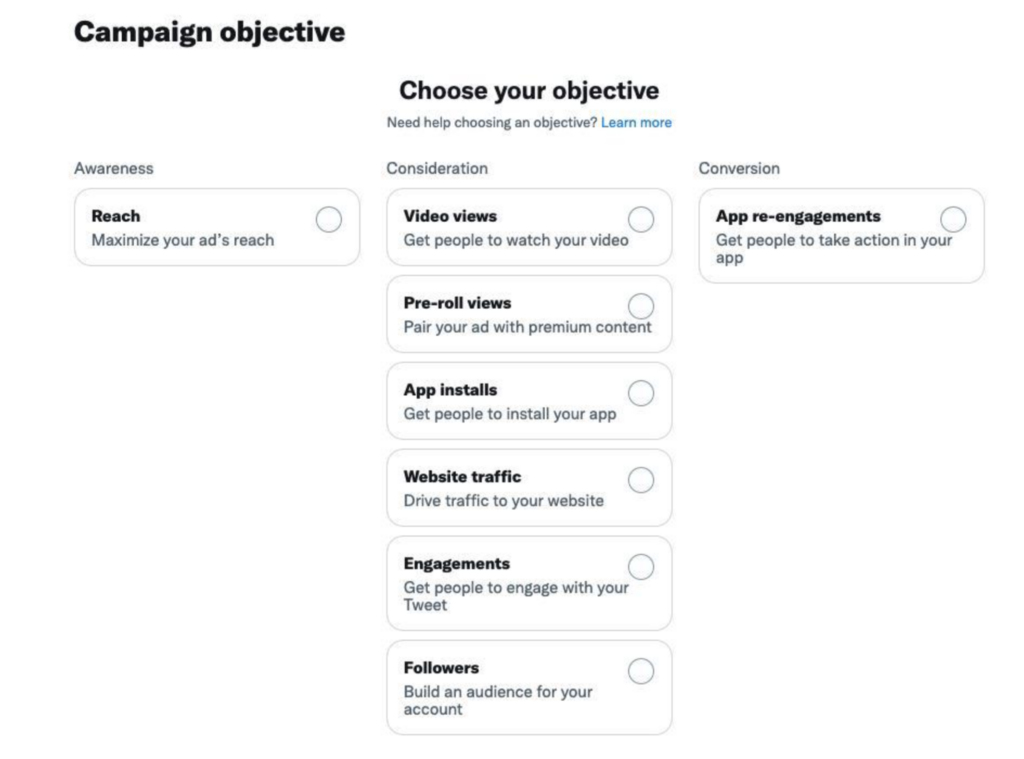
Types of Payment, Campaign Flow, and Timing
When setting up a campaign on X, the first step is to select its duration—either for a limited period or with no end date. The next step is choosing the objective fulfillment method. For example, in traffic-focused campaigns, we recommend selecting “site visits” instead of “link clicks.”
This is followed by bid type selection, where you can choose automatic bidding or manually set values for CPM, CPC, etc. As with most platforms, we recommend using Autobid for optimal results. In terms of payment method, both X and we generally suggest using impression-based CPM.
Next is ad placement. X allows ads to be shown in users’ main timelines, on user profiles, and within search results.
Another important step is the brand safety section, where you can define whether your ad can appear near explicit content—and how explicit that content can be. X is planning to introduce ad placements alongside highly explicit content in the future, which may present a challenge for some advertisers depending on their brand guidelines. As expected, you can also exclude specific accounts or profiles from your targeting.
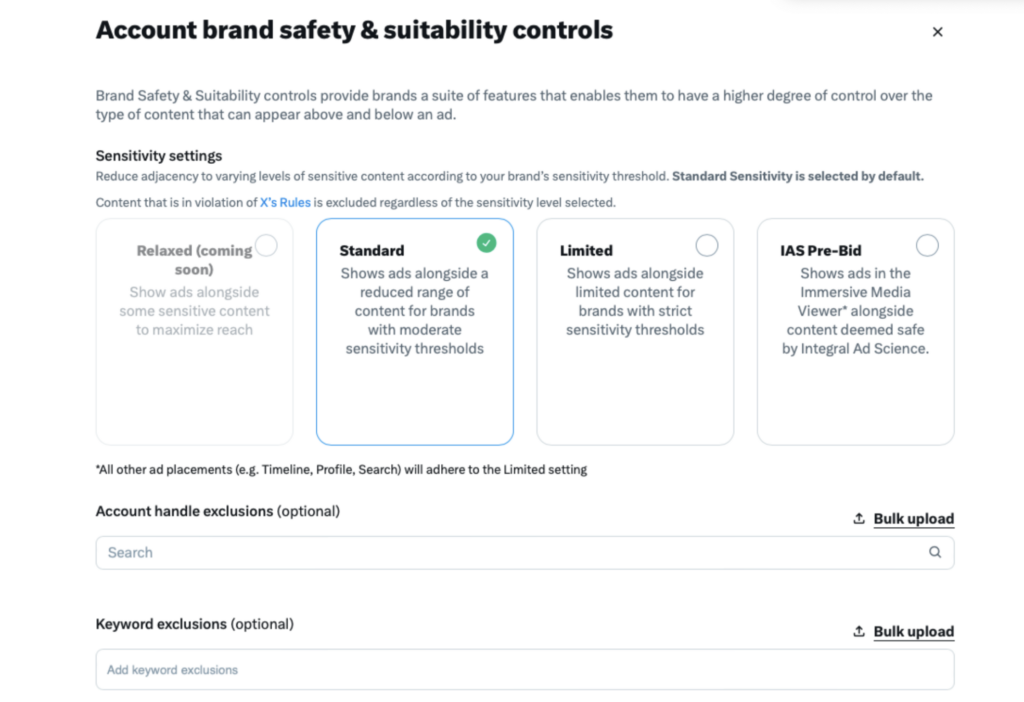
Comment Restrictions
The X platform allows advertisers to limit or even completely disable comments under ads, which can be a major advantage for certain campaigns.
Ad Targeting
Demographic targeting on X includes geographic options at the level of the entire Czech and Slovak Republics, as well as the ability to select the language your ad is targeting.
For targeting based on age, gender, and technical specifications—such as device model, operating system, or mobile carrier—X offers several options, including the ability to show ads only on devices connected via Wi-Fi (formerly popular for app download campaigns). You can also target users with new devices.
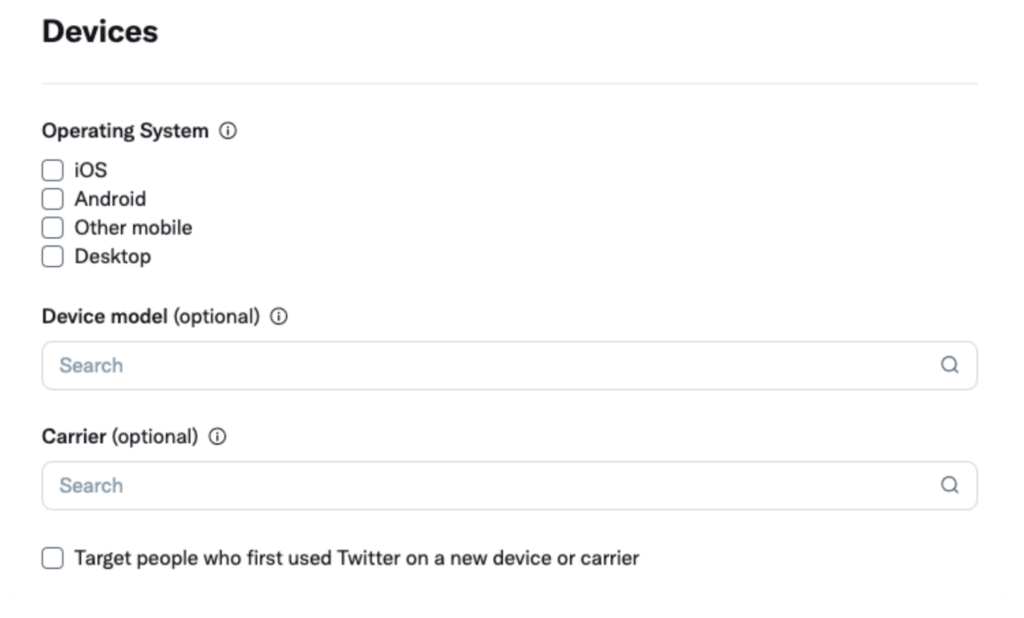
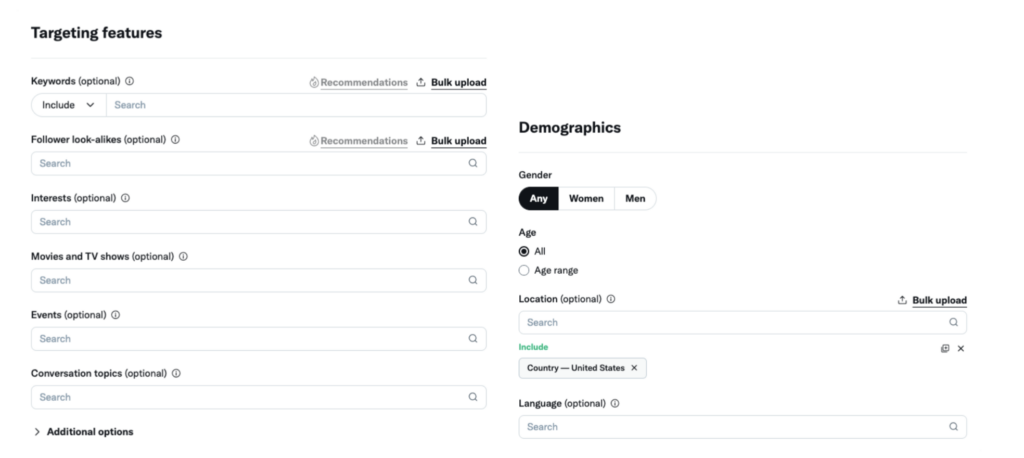
If you want to target conversations, X allows you to choose from over 10,000 topics across 25 categories such as sports, lifestyle, or books. Campaigns can also use keywords that users have typed, interacted with, or searched for on X.
For optimal results, the platform recommends including at least 25 relevant keywords per campaign. X also supports interest-based targeting, divided into 25 main categories and 350 subcategories—maximum effectiveness can be achieved by selecting ten subcategories and evaluating performance continuously.
TV content targeting is available abroad, but this option is not currently offered in our region. Another targeting method is audience lookalikes—targeting users who follow a specific account. For example, users following @TwitterBusiness may be interested in advertising on X. It’s recommended to select around 30 relevant accounts, ideally without combining this with interest-based targeting.
We’ve found that running two separate campaigns—one targeting interests and the other targeting followers of specific accounts—works well.
Creating an Ad
The ad creation process is simple and very similar to platforms like LinkedIn or TikTok. You select the format, upload your own creative and write the copy—or choose directly from your existing ad gallery.
Just don’t forget to create a UTM parameter, so your data tracks correctly in Google Analytics.
What Results Have We Seen So Far—and What Do We Think of the Platform?
Our newly gained experience has shown that X Ads deliver pleasantly low cost-per-reach and cost-per-click for B2B campaigns—helping our clients drive solid traffic to their websites, with the occasional conversion along the way.
Even brand awareness campaigns have solid potential here, especially when targeting a qualified, higher-income audience. The cost per reach is significantly lower than on LinkedIn. However, broader targeting can bring in less relevant users as well. One interesting bonus: increased interest from journalists, who often browse X for sources and stories.
From our perspective, X is a valuable addition to the media mix—particularly in certain industries where it deserves attention. It may not be the platform you bet everything on, but it certainly has something to offer. Given its specific user base and high engagement rate, it also provides useful insights into market sentiment and public opinion.
For companies looking for new ways to reach decision-makers or raise brand awareness, X Ads can be a strong tool. We recommend allocating a test budget over 2–3 months—ideally in the lower tens of thousands of CZK—to see what this platform is capable of. Who knows, it might just become your new secret weapon in digital advertising.
Source: https://business.x.com/en/advertising & https://www.cernovsky.cz/marketing/reklama-na-twitteru/
Twitch as the Unexpected Player: Why Your Brand Should Pay Attention
The platform Twitch.tv—unlike the typical social media channels most of us use daily—has its own cultural nuances and is defined by the type of content it hosts. Twitch focuses primarily on live streaming, meaning real-time broadcasts delivered straight to viewers’ screens. So-called “streamers” create media content and distribute it online using streaming technology and software for audiences who actively seek out that kind of content.
Once upon a time, there was a guy named Justin...
Twitch.tv—originally known as Justin.tv—was created as a platform for sharing one’s personal daily life via live stream. The idea came from its founder, Justin Kan (yes, he really named the network after himself), who decided to literally strap a camera to his head and document his life in real time—24 hours a day, 7 days a week—for anyone to watch.

In 2007, the only active channel on the platform belonged to Justin himself—no one else could register. But before long, the digital curtain dropped, and countless user-created channels emerged, with people streaming and generating user-generated content (you can read more about UGC on our blog too ).
Today, Twitch.tv is the most successful live-streaming platform in the world, holding a 73% market share. In 2023 alone, viewers watched a total of 21.4 billion hours of live content, with 240 million unique monthly visitors. In the Czech Republic, the numbers are smaller but still notable—with around 45,000 unique viewers each month. Statistics show that 3 billion people globally play video games—that's about 40% of the world's population. With such a massive audience, it's no surprise that brands are eager to claim a share of attention for their campaigns on a platform primarily built for gamers.
How Twitch.tv Hits the Target Audience
What does marketing look like on Twitch? One obvious answer is unskippable ads—the kind we all love to hate. On Twitch, these often appear right in the middle of live streams, where the platform’s algorithm serves tailored ads that viewers must sit through in order to continue watching their chosen content.
What makes these ads clever is how precisely they can target specific audiences. For example, if you’re watching a cooking stream, it’s very likely you’ll see an ad for a new frying pan. Watching a gaming stream? A promo for the latest gaming PC probably isn’t far off. This contextual relevance increases the chance that the ad actually resonates with the viewer.
Beyond that, Twitch also features banner ads, affiliate programs, and influencer sponsorships—just like other social platforms. However, if you want to advertise on Twitch using traditional ad formats, you’ll need access to Amazon DPS (Demand-Side Platform). Unfortunately, this service isn’t available on the Czech market, meaning you can’t launch campaigns directly. Instead, brands must reach out to Twitch and arrange a private media deal.
Advertising Here Is One of a Kind
But what exactly makes Twitch.tv such a uniquely attractive platform for marketers? We’ve touched on it already—but let’s take a closer look.
Every streamer builds their own community of viewers, who tune in based on shared interests—whether it’s cooking, art, or the most dominant reason Twitch exists: gaming. Each streamer maintains direct contact with a niche audience that likely shares their passions. Unlike traditional television or pre-recorded YouTube videos, Twitch viewers can interact with streamers in real time—no need to wait for a reply in the comments. This level of interaction significantly boosts user engagement.
It’s like imagining Rey Koranteng and Lucie Borhyová reading and reacting to live viewer opinions while presenting the evening news on TV Nova. On Twitch, this kind of dynamic interaction is not only possible—it’s essential. And it’s exactly what sets Twitch apart from other social media platforms.
For marketers, the Twitch community presents a valuable opportunity to connect with Gen Z: 41% of users are between 16–25 years old, and another 32% fall into the 25–34 bracket—making up a combined 72%. This rare mix of live content, audience engagement, and demographic focus offers brands a distinct environment where they can truly stand out.
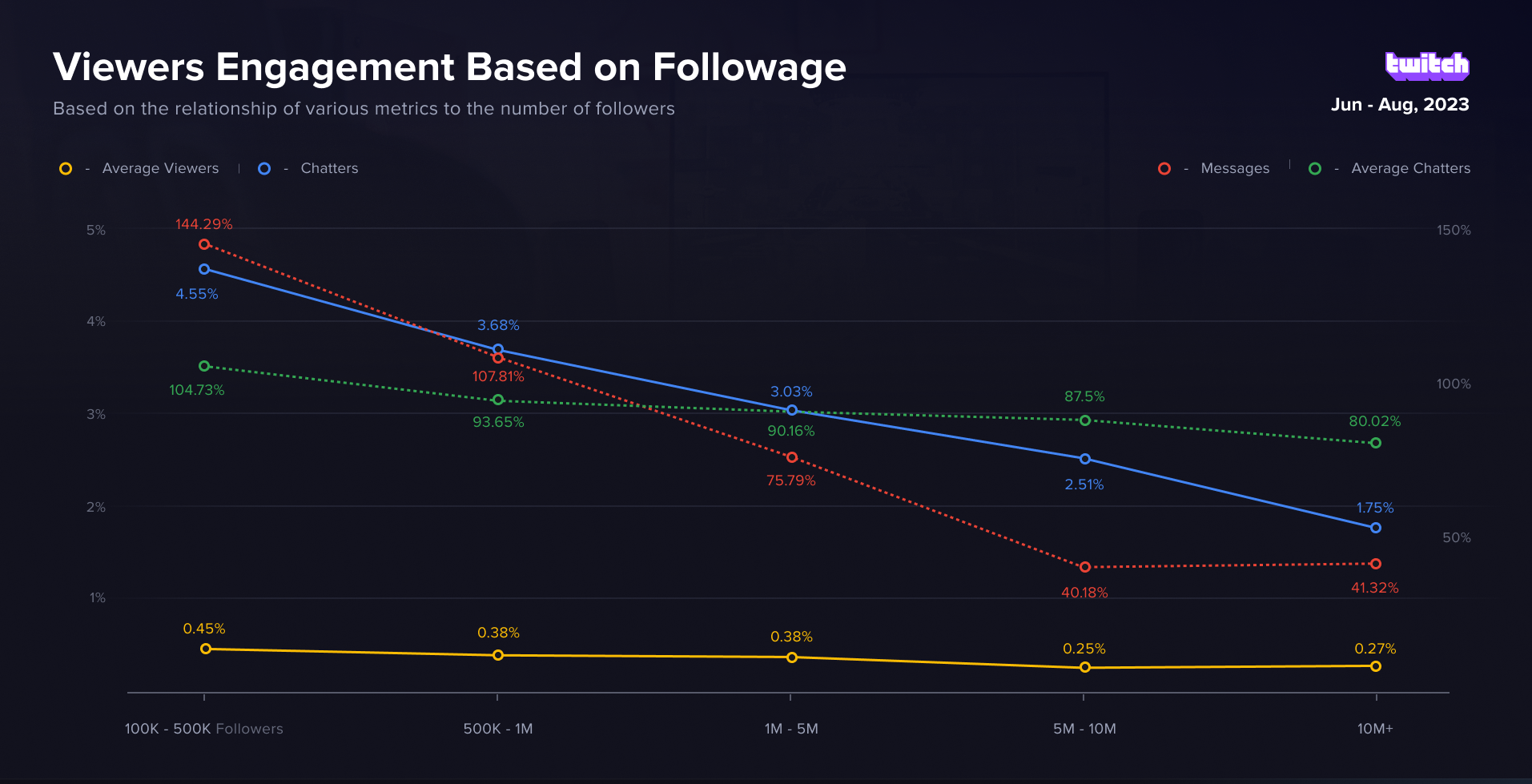
Source: Streams Charts
Take Off the Rose-Colored Glasses
High engagement, a reachable target audience, and strong appeal to younger generations can make brands feel like Twitch.tv is the perfect place to invest their marketing efforts and make a breakthrough. But even here, there are barriers worth considering before integrating this unconventional platform into your strategy.
Brands often have to work directly with streamers to create sponsored content, due to the platform’s targeting limitations—which rely more on the personality of the streamer than on the specific content being viewed. This approach can be more expensive, time-consuming, and produce highly variable results depending on the streamer’s influence and authenticity.
Twitch users are also generally more resistant to traditional advertising formats. Since the platform is built on long-form, live content, ads can feel disruptive. Many viewers subscribe to Twitch Prime or individual streamers specifically to avoid ads altogether. And because viewers are engaged in real-time content, they’re less likely to click away to explore promoted products or services. As a result, while impressions may be high, click-through and conversion rates can remain low.
Finally, it’s crucial to remember that the majority of advertising on Twitch doesn’t come from traditional placements—but from influencer partnerships. This dynamic requires a different mindset, creative strategy, and long-term brand collaboration to be effective.
A Creative Approach to Campaigns
If a brand decides to launch a campaign involving influencer partnerships, the approach is typically more creative than traditional collaborations. It considers the communities the brand wants to engage with—and how to best connect across different streamers. These partnerships are especially common among gaming companies, tech brands, supplement providers, and energy drink labels.
Brands can leverage branded extensions, product placements, event sponsorships, or even organize their own tournaments and community challenges. On-screen banners and custom overlays with distinctive brand elements can be seamlessly integrated into the content being streamed.
Unlike paid ads, these collaborations offer continuous brand exposure throughout the stream—not just a fleeting 10-second spot—making them more immersive and impactful for engaged viewers.

Red Bull’s product placement in the form of a mini-fridge and drinks, prominently displayed in the commentator studio of a prestigious Valorant esports tournament.
 DHL banners appearing at the bottom of the stream during the global ESL Pro League tournament in CS2. You can also spot 1xBET as the official betting partner.
DHL banners appearing at the bottom of the stream during the global ESL Pro League tournament in CS2. You can also spot 1xBET as the official betting partner.
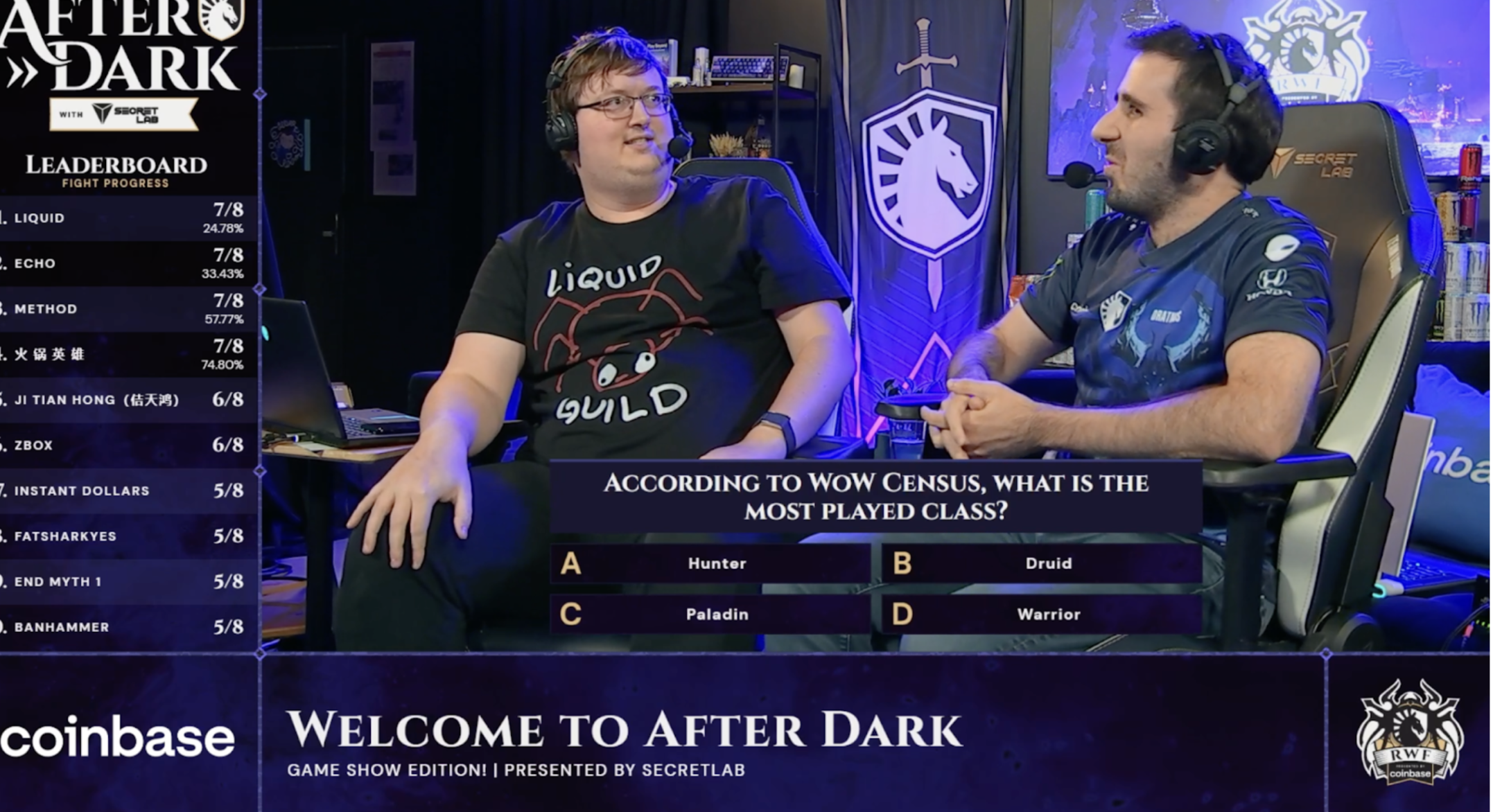
A gaming show and World of Warcraft quiz hosted by SecretLab during the Race to World First event, where player guilds compete against each other. Other partners included Alienware and Monster Energy. Banners from Coinbase were visible, along with product placement—chairs, laptops, and energy drink cans featured in the background.
Louis Vuitton, Red Bull, Spotify, Coca-Cola... and Komerční banka?
One place we can look for inspiration is past events that have involved brands—both global and local. Before we dive into the Czech scene, let’s take a look at some of the major campaigns that made waves on Twitch.tv.
Twitch.tv hosts a wide variety of tournaments each year. One of the biggest is the League of Legends World Championship, organized by Riot Games. Among its most notable sponsors are luxury brands like Louis Vuitton, Mercedes-Benz, and even Tiffany & Co.—a clear sign that high-end labels are ready to invest in gaming culture when the audience and cultural fit are right.
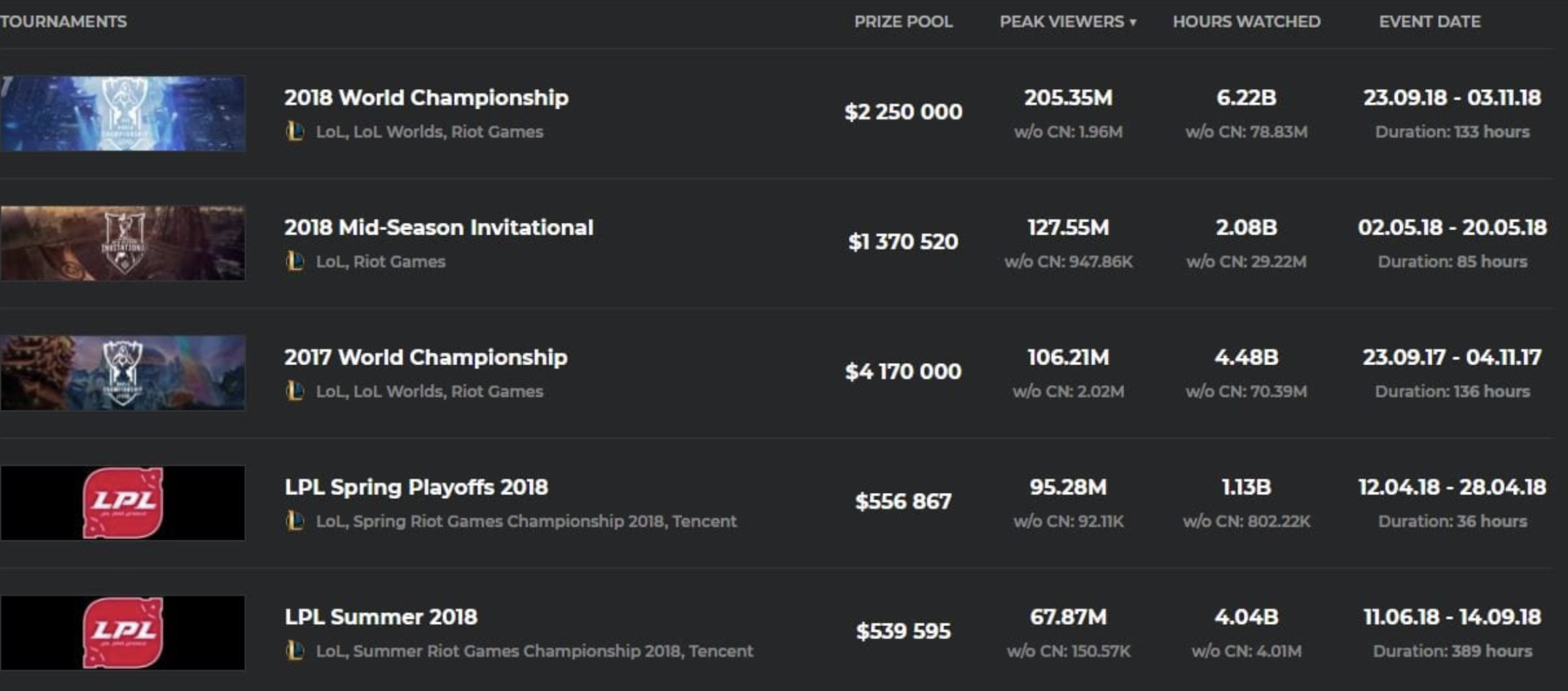
The League of Legends World Championship tournament recorded 205 million viewers worldwide and 6 billion hours watched in a single year.
Amazon Prime Gaming was the most-mentioned sponsor of the tournament, appearing over 35,000 times in chat. Viewers could earn limited in-game items and merchandise each day of the event simply by typing “!prime” to enter a giveaway. Louis Vuitton and Tiffany & Co. created buzz around the League of Legends finals by designing the championship trophies for the winners.

At the top of the individual streamer rankings stands Spanish creator Ibai Llanos Garatea, who has hosted the amateur boxing event La Velada del Año annually since 2021 on his Twitch channel. The third edition launched with major sponsorship from Red Bull, Spotify, and Coca-Cola. By Twitch standards, the event was a massive success—watched by 3.7 million Spanish-speaking viewers simultaneously, alongside a live audience in a 70,000-seat arena. While these numbers may seem modest compared to global broadcast events, they highlight the growing strength of the community and reveal promising potential for the platform’s future.
For brands, Ibai is an ideal Twitch partner thanks to his exceptional ability to involve his entire community and produce viral, high-quality studio-level streams—a true money-maker. You can check out his well-edited behind-the-scenes documentary in your free time here.
https://www.youtube.com/watch?v=SUPUp2QSDDg
You may have also heard the term “cinkačka” here in the Czech Republic as part of a campaign by Komerční banka and Mastercard, titled Cinkačka IRL. In collaboration with six Czech streamers, the brands organized a tournament combining online and offline games, where streamers competed to win prizes worth CZK 300,000 for their viewers.
The only condition for viewers to be eligible to win was to download the KB+ app and open an account with a debit card.
https://www.youtube.com/watch?v=CwBnlVaStOo&t=5s
Conclusion
Marketing on Twitch.tv offers brands a unique opportunity to reach a specific and loyal community—but it also requires an understanding of the platform’s distinctive dynamics. For brands, it’s essential to approach Twitch as a space for creating meaningful viewer experiences with added value, where collaborations with the right influencers can lead to higher engagement and better results.
If you’re considering investing in this platform, it’s important to take its specifics into account—and remember that success here depends on your ability to engage with audiences in real-time…
Or leave it to us—and we’ll help you make it happen.
JINGLE: The Secret Weapon Everyone Forgets
There are many tools available to compete in the digital marketing arena. Every brand should define itself through a set of distinctive elements that shape its identity—such as its logo, fonts, colors, and more. One of these elements, though often overlooked, is the jingle.
A jingle, or advertising tune, is a short, catchy melody commonly used in radio, television, or online. An ideal jingle is memorable, rhythmic, and sonorous—so that the brand or product instantly comes to mind whenever the tune is heard by a potential customer.
So what are the characteristics of a jingle that guarantees success?
An unforgettable and catchy melody is always a safe bet. If it carries an upbeat and energetic tone, the audience is likely to respond positively. Instrumentation—or the choice of musical instruments—can further emphasize the uniqueness of the jingle. Complex musical arrangements aren’t always necessary; sometimes just a few distinct notes, paired with well-chosen sound effects, are enough to make it stand out.
If a jingle is paired with a simple and memorable line or slogan that reinforces the brand’s core message or positioning, the effect can be powerful. A perfect example is McDonald’s iconic jingle with the line: I’m lovin’ it. Incorporating the brand name, logo, or other distinctive elements into the lyrics can be just as effective. A clear and compelling call to action (CTA) can also work well, directly encouraging the audience to take specific steps—such as making a purchase or visiting a website.
The overall tone of the jingle should match the brand's image and resonate with the target audience. The mood can be upbeat, fun, emotional, or humorous. Opting for a sad or melancholic jingle is generally a poor choice—while it might be original, associating the brand with negative emotions is rarely advisable. Jingles have been a staple of advertising across media for decades, which gives them a strong nostalgic appeal today. Many consumers fondly recall jingles from their childhood. Hitting the “right note” can create a powerful emotional connection between the listener and the brand. Nostalgia can be used to craft jingles that evoke familiarity and comfort—leading to more positive brand associations.
As for jingle length, there’s no fixed rule or formula for success. The key is brevity and memorability. Some musical ideas need just a few seconds to evoke the desired emotion; others may take up to a minute. The ideal length typically depends on the planned use of the jingle. Imagine if the Netflix intro lasted 16 seconds and played before every episode on the platform—it would likely become irritating after 20 episodes.
That’s why a jingle must adapt to the specific marketing channel. If it’s intended for broader use, it should be flexible. Netflix, for instance, commissioned a special version of its intro for feature films in theaters. The result is a 16-second orchestral version composed by Hans Zimmer—dramatic and cinematic, designed specifically for the big screen.
The Jingle as a Winner
So what gives jingles an edge over other brand elements? You’ve probably experienced this many times—a song gets stuck in your head, and it pops up again during random moments. That’s exactly the purpose of a jingle. Because they’re short and distinctive, they’re much easier to recall in connection with a brand.
One of the main goals of advertising is to leave a lasting impression on the consumer. Jingles are incredibly effective in achieving this due to their innate memorability. They rely on repetition, rhyme, and melody to create a catchy tune that’s hard to forget. A well-crafted jingle can linger in the listener’s mind long after the ad has ended.
Another strength lies in their uniqueness. Unlike most brand elements—which are primarily visual—jingles use sound to set the brand apart, even in an oversaturated market. Of course, there are limits: you can’t exactly play a three-second jingle on a city billboard 24/7. But otherwise, jingles are highly versatile and can be widely used across various digital channels.
And perhaps the best part? Unlike a logo—which has fixed rules like moodboards, fonts, and color guidelines—a jingle can evolve and adapt to different marketing campaigns. This provides flexibility and cost-effectiveness in brand communication. A great example is Hyundai’s jingle: the melody stays consistent, but its execution changes from campaign to campaign. Each version feels fresh, yet the core remains recognizable.
Conclusion
Jingles remain a powerful marketing tool thanks to their ability to create emotional connections, enhance memorability, strengthen brand identity, adapt across platforms, and evoke nostalgia. Still, it’s important to weigh both the advantages and potential limitations of jingles when planning advertising campaigns. A well-crafted and strategically used jingle can have a significant impact on brand awareness and long-term success.
The Power of Community: How UGC Influences Marketing Communication
UGC, or User-Generated Content, is becoming increasingly important, placing customers in the spotlight as they connect their personal stories with a brand. Whether it's by sharing a photo of a new product or posting a review, they create content that goes far beyond being a modern trend. According to AdWeek studies, 85% of users trust brands and products more because of UGC.¹ However, behind the façade of authenticity, there is often a filtered reality—and sometimes even misinformation.
UGC is growing rapidly—but why?
We’re sharing more and more of our lives online—and brands are well aware of it. Thanks to accessible technology, it’s easier than ever before, as proven by the 4.2 billion active social media users worldwide.¹ That’s why this form of advertising appears across all major platforms—Instagram, TikTok, Meta, X, and many others. User-generated content is also featured on the brands’ own profiles, where companies repost it to encourage their customers’ creativity—in effect, gaining free advertising. UGC is perceived positively for its authenticity and credibility, especially when compared to traditional advertising. According to a Gartner report, up to 84% of Millennials are influenced by UGC during their purchase decisions. These campaigns prompt engagement, and users naturally help spread the content further, bringing companies (at best) significant benefits. But, as with anything that seems too good to be true, it’s important to stay cautious and keep your eyes open.
The Dark Side of UGC
Even UGC isn’t immune to doubt. Despite its clear advantages, it’s important to acknowledge the darker side of this modern form of advertising. A key factor is the content creators themselves—their output can often be inconsistent or lack professionalism. Poor-quality content may misrepresent the brand and create the wrong impression, ultimately devaluing the brand in the eyes of consumers.
Brands face the risk that users will promote their products in subpar quality, with inappropriate messaging, or even with spelling and grammar mistakes. The greatest threat, however, comes from misleading or false information. With limited moderation capabilities, misinformation can harm a brand’s reputation—and according to research from MIT, false information is 70% more likely to be reshared than the truth. Fake reviews—whether overly positive or negative—undermine the credibility and authenticity that make UGC appealing in the first place. For many users, trust is more important than popularity. We can debate who should be held accountable for harmful content, but speculation alone won’t protect a brand’s reputation. Brands must maintain a healthy distance from disinformation and, through their own authenticity, champion the truth.
Successful UGC Campaigns
To better understand UGC in practice, we've prepared examples of both successful and failed campaigns that chose to harness the power of the crowd. So, what’s the formula for successfully sparked UGC? For years, we’ve seen a recurring set of campaigns that continue to receive positive feedback from across the globe.
One of the best examples of a successful UGC campaign is the GoPro Awards. This prestigious program rewards the best footage captured with GoPro cameras and encourages users to share their most exciting experiences by submitting photos and videos across various categories, with a chance to win cash prizes and other rewards. Each year, GoPro distributes up to 5 million dollars through this initiative. Through the campaign, GoPro not only promotes its brand and products but also fosters a strong community where users inspire one another and share their experiences. The high-quality user content is used in GoPro’s marketing materials and social media, significantly boosting the brand’s visibility and credibility. The most iconic contribution to this campaign is a video by Richard Leonard, shared on GoPro’s official channel, which quickly went viral worldwide.
Another standout example of UGC’s power is the BeReal app, which is built on users’ desire to share and view content that is authentic and rooted in everyday life, rather than perfectly curated studio photos. Once a day, at a random moment, the app prompts users to capture and share their current reality within two minutes—no filters, no post-production, just real life. In 2023, BeReal launched a unique campaign by projecting the best and funniest user photos from around the world onto massive billboards in New York’s Times Square. The campaign gave users the chance to be part of something bigger and celebrated the creativity and diversity of its global community. It successfully captured attention and strengthened both the BeReal brand and the sense of belonging among its users.
Unsuccessful UGC Campaigns
Now that we’ve mastered how to identify a successful UGC campaign, it’s time to learn from the mistakes of others by looking at companies that didn’t enjoy the same success—and instead sparked controversies that proved difficult to recover from.
One example of an unsuccessful UGC campaign is McDonald’s #McDStories. In 2012, the company launched an ambitious Twitter campaign aimed at encouraging customers to share positive stories and experiences related to McDonald’s. However, Twitter—already a risky platform due to its lack of content filtering—quickly turned the campaign upside down. What was meant to be a feel-good initiative spiraled into a PR disaster, as users flooded the hashtag with negative, sarcastic, and critical posts. Instead of sharing positive stories under the #McDStories hashtag, users began posting negative reviews. They complained about food quality and highlighted the brand’s darker sides. While the campaign did go viral, it completely backfired—rather than strengthening the brand, McDonald’s became the butt of online jokes. Their iconic clown mascot unintentionally became the perfect symbol of how the brand was perceived on Twitter—only this time, the clown turned into an entire circus. Despite efforts to quickly pull the campaign, the damage had already been done—and it was irreversible.
#McDStories is a textbook example of how a UGC campaign can spiral out of control if not carefully planned. McDonald’s expected users to act as brand ambassadors and share only positive experiences—but these unrealistic expectations led to a public relations disaster.
Another failed campaign was Starbucks’ Christmas-themed #SpreadTheCheer in the UK, aimed at encouraging festive spirit and positive vibes. Much like McDonald’s, this forced positivity quickly backfired. Users hijacked the hashtag to express frustration toward the company, accusing it of exploiting holiday sentiment for profit while allegedly failing to uphold basic labor standards and avoiding taxes. What made matters worse for the #SpreadTheCheer campaign was that tweets using the hashtag were publicly displayed at London’s Natural History Museum. The negative feedback didn’t remain confined to social media—it was amplified both in the virtual world and in the real one.
How Are Leads Generated?
So how do you go about it? To build a community and increase brand awareness, a company needs to generate effective leads that reach potential new customers while boosting engagement within its existing audience. When executed successfully, brands can benefit in many ways—such as increased visibility, trust-building, stronger engagement, and higher conversions.
According to research, 93%¹ of brands have gained new customers through UGC, and reported a 28%² increase in engagement compared to traditional branded content—which is viewed up to 10 times less than UGC.³
There are many effective ways to encourage user-generated content, but each comes with its own cultural specifics and factors that need to be carefully considered.
- Hashtags – By creating unique hashtags, brands make it easier for users to share relevant content. Hashtags also allow companies to track the impact of new products on the market. Customers can be encouraged to keep posting under the hashtag with the promise that their content might be featured on the brand’s official account. Hashtags can also be used to organize contests, offering prizes for the best submission. Running a contest motivates users to generate UGC and provides brands with quality content for future marketing campaigns. Influencers can also be involved, using the hashtag and encouraging their audiences to participate. However, don’t forget to include a clear and compelling call to action—users need to know the hashtag exists and have a reason to use it in their posts.
- Giveaways – People love free stuff—and they’re eager to participate in contests that offer something in return. Brands can organize giveaways offering products, experiences, cash, or other incentives. It’s up to you how the giveaway is structured. You can ask followers to share a post, tag friends, use a hashtag in their own content, follow the brand’s account, create content—or combine these actions.
- Content Creation & Voting – Take inspiration from campaigns like GoPro Awards and invite your users to upload their best photos, videos, or experiences with your brand or product—and reward the most compelling ones. You can select the winners yourself or let the community vote for their favorite submission. This way, you step outside your own bubble and gain broader insight—something that’s often needed to avoid ending up like the unsuccessful McDonald’s and Starbucks campaigns.
- Reposting User Content – By actively reposting content created by customers, brands encourage others to participate and create their own. This not only strengthens community ties but also increases brand visibility. Tagging users builds relationships—and customers are genuinely happy when their photo is shared with a wider audience. :)
- Ratings & Reviews – Let your customers rate your product and share their reviews publicly. You’ll gain valuable feedback that you can act on—and reviews themselves are a form of UGC that can be reused in marketing campaigns. Both Gen Z and Millennials find UGC up to 50% more trustworthy than traditional ads.
- Trends – UGC content is especially prevalent on platforms like YouTube and TikTok, where Gen Z dominates. For targeting Millennials, a mix of TikTok, YouTube, Instagram, Meta, and Twitter is more effective, according to research by The Manifest. Later Social highlights trending UGC formats such as unboxing videos, reviews, tutorials, and showcasing authentic experiences.
Choosing the Right Metrics
So which metrics should you focus on to determine whether your UGC campaign was truly successful? Common key performance indicators (KPIs) for engagement include likes, shares, comments, click-throughs, and social media growth. If you're aiming to measure conversions, look at the actions directly generated by UGC posts—such as influencer discount codes or affiliate links. Additionally, track the lifetime value of customers who were exposed to user-generated content, as this can reveal the long-term impact of your UGC strategy.
Distinctive Brand Assets: The Shortcut to Building a Strong Brand on Social Media
In the oversaturated environment of social media, brands compete for attention and a place in consumers’ minds. The winner is the one who secures more neural connections and builds higher mental availability. That’s why it’s not so much about being different, but about standing out and being distinctive. Distinctiveness over differentiation. And in this regard, distinctive brand assets play a key role. Let’s take a look at how to work with them in your social media communication.
A shortcut into the customer’s mind
Distinctive brand assets help a brand make its way into the customer’s mind. Their primary function is to evoke the brand name, enable instant recognition, and enhance memorability. Every time you use these assets in your communication, it becomes easier for the customer to associate the message with your brand. And that is essential for building mental availability.
Core distinctive brand assets include the brand name, logo, font, color palette, tagline, brand face, jingle, music track, and symbolic shapes. For a brand aiming to go beyond social media, it’s important to have a broad set of distinctive brand assets ready to use across different media channels – for instance, a character or logo won’t help in a radio ad; you need a jingle.
Source: Building Distinctive Brand Assets (Jenni Romaniuk)
How to build strong distinctive brand assets
Let’s say you already have a set of brand elements. How do you turn them into truly strong representatives of your brand—ones that can stand on their own and support mental availability (and ultimately, sales)? You need to showcase your assets alongside your brand name, to as many category buyers as possible, consistently and with strong visibility. Let’s break it down:
- Broad reach among category buyers – Just like brands themselves, distinctive brand assets are built by showing them regularly to as many customers in your category as possible. Use brand-building platforms with broad reach to achieve this.
- Prominent execution – This is about how your brand assets are placed and presented within specific social media formats. Make sure your elements are prominent, clearly visible, and positioned near the brand name in all communications.
- Consistency – This is key to embedding assets in customers’ memory. Use your distinctive brand assets consistently across all formats and every touchpoint to strengthen mental connections. Avoid trying to be original every time.
Core distinctive brand assets of McDonald’s
Using established distinctive brand assets of McDonald’s on social media. Even a product can function as a distinctive brand asset—if it is well-known enough.
Two characteristics of strong distinctive brand assets
After a few months of consistently building your distinctive brand assets, it’s time for the first measurement. You need objective data on the current strength and potential of your assets to know whether you're on the right track. We recommend using Jenni Romaniuk’s practical framework (from the publication Building Distinctive Brand Assets), which works with two key variables: fame and uniqueness.
Fame refers to how well a specific distinctive brand asset is known. It indicates what percentage of people who buy in your category associate a given brand asset with your brand. For example, a fame score of 45% means that 45% of category buyers link that particular asset to your brand. However, they might also associate it with a competitor at the same time. You can build fame for your distinctive brand assets through the practices mentioned above—linking the asset to your brand name, ensuring broad reach among your target audience, and executing with high visual prominence.
Uniqueness, on the other hand, refers to whether a specific asset is perceived as unique to your brand and not confused with any similar asset from competing brands. A high uniqueness score means your brand is one of the few that comes to mind when consumers encounter that particular brand asset. For instance, a uniqueness score of 60% indicates that 60% of all mental associations with that asset belong to your brand, while 40% are linked to a competitor. Unfortunately, uniqueness tends to lie outside a brand’s direct control, as it largely depends on what competing brands are doing with their own distinctive brand assets.
Distinctive assets grid
By combining different scores of Fame and Uniqueness, you get a four-quadrant matrix known as the Distinctive Asset Grid. This framework maps how your current distinctive brand assets are performing and predicts their potential. It helps guide strategic decisions about whether it’s worth continuing to invest in your existing assets or whether it would be more effective for the brand to develop new ones.
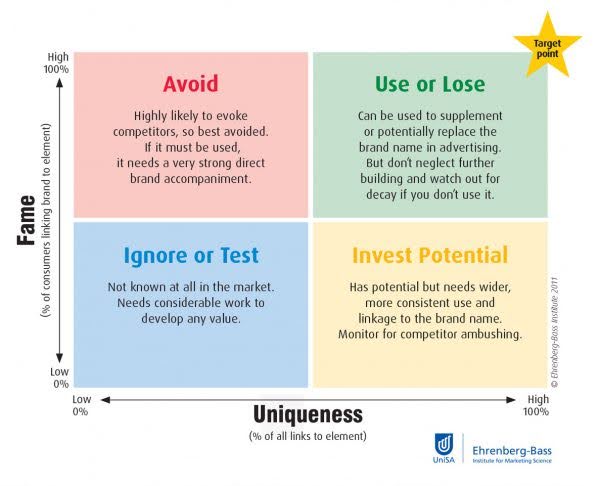
Source: Ehrenberg-Bass Institute
Ideally, you want to be in the top right quadrant of the grid—Use or Lose—where both Fame and Uniqueness are above 50%. If you're approaching 100% on both variables, you've built strong distinctive brand assets that can often serve as a substitute for the brand name in large parts of your communication. But don’t forget: you also need to continuously build these assets for new buyers entering your category. If your assets sit just above the 50% mark, it's important to keep focusing on growing Fame—by consistently using the assets alongside your brand name.
Another interesting quadrant that signals strong potential for your distinctive brand assets is the bottom right—Invest Potential—where Uniqueness is above 50%, but Fame is still below 50%. This means consumers largely associate your brand assets exclusively with your brand and don’t confuse them with competitors—good job! Now the focus should shift to increasing Fame by reaching as many category buyers as possible. In practice, this means placing your distinctive brand assets near the brand name in all your communications. In video formats, ideally show them right at the beginning and repeatedly throughout. Sure, it might sometimes feel a bit forced—but memory structures are only built through consistent repetition of the same elements, over and over again.
On the other hand, the bottom left quadrant—Avoid Solo Use—should raise concern. Here, Fame is above 50%, but Uniqueness is below 50%. While your brand assets may be widely recognized, their impact is diluted because competitors benefit from similar associations. These are typically generic assets tied to the category itself—like soft blue shapes for yogurts, red for ketchup, or bird silhouettes for airlines. If your brand holds a smaller market share than competitors using similar distinctive brand assets, it’s usually better to stop relying on those assets and start developing new, more unique ones.
If you're a new brand and you fall into the bottom left quadrant—Ignore or Test—there’s no need to panic. Low Fame and Uniqueness scores may simply reflect that not enough people know you yet—let alone recognise your distinctive brand assets. However, if you've been on the market for some time, use your assets consistently in communication, and are reaching a large share of category buyers, then you've likely chosen the wrong assets. Not every asset has the potential to be memorable—they may be too subtle or overly sophisticated. This is where a creative (or neuroscience-savvy) expert comes in to help design new, memorable distinctive brand assets.
We’ve defined distinctive brand assets for Wobenzym, Strike TV, and Yolab. Shall we create yours too?
5 situations when influencers do not completely suck
5 situations when influencers do not completely suck
We always approach marketing trends with a skeptical eye and a triple measure, and influencer marketing is no exception. While some cannot imagine a future for brands without influencers, both live and virtual, we keep our enthusiasm in check. With a healthy dose of skepticism, we have summarized situations where influencers can truly bring business success. Yes, eventually, we found a few. Does this apply to you? Read on!
When does it make sense for a brand to collaborate with influencers?
Let’s get straight to it. Here are five situations when you might consider contacting your favorite influencer.
1. When you need to increase reach with a small budget
Collaborating with an influencer is an effective way to achieve a broader reach in your target group (thus increasing brand awareness), even if you are a startup with a small advertising budget. The prerequisite is of course a product or service attractive enough to convince an influencer to accept a barter or lower fee. In this context, some talk about influencers as a catapult that launches startups to their first customers.
2. When you want to reach younger generations (Gen Z, Gen Alpha)
These generations tend to trust content that is authentic and non-commercial. Conversely, they exhibit skepticism and aversion to advertising messages. Some even hardly open Google search and base most of their purchasing decisions on recommendations from influencers and creators on TikTok. If a large part of your target audience consists of these generations, you could consider engaging influencers.
3. When you need to create instant buzz
Short-term influencer campaigns are ideal for special events in your brand’s life, such as product launches. They create buzz among the target audience and support the trial of a new product.
4. When you have a niche target audience and no research
Sometimes influencers understand their audience better than brands understand their target customers. They know which type of content is not only relevant but also resonates on a deeper level. If you do not conduct market research, do not organize focus groups, and are not in daily contact with your customers, then an influencer can help you keep your finger on the pulse of the times, even in a very specific or dynamic segment.
5. When operating in a regulated segment
Collaborating with influencers may be one of the few ways to promote products in a regulated segment that otherwise does not allow paid advertising on social media. This is somewhat of a gray area, which can be utilized by brands with CBD products, electronic cigarettes, etc.
Paradoxes of influencer marketing
For an influencer collab to be really effective in business terms, two things are crucial. Yet they often contradict each other: the influencer’s reach and their authenticity.
The need for reach is obvious. Brands grow by regularly addressing the largest part possible of their target audience. And why is authenticity important? On social networks, first and foremost we all want to be entertained or educated, and if a brand’s message is overtly commercial, we automatically skip, scroll, and mute it. This is especially true for younger generations, who excel at ignoring advertising messages. Brands need to find ways to reach consumers on networks in a subtle or at least authentic manner – simply put, in a way that consumers are willing to pay attention to and from which they can feel positive emotions. Ideally, influencers and creators allow brands to do just that. Ideally, they also have an aura of authority that can influence the opinions, behaviors, and decisions of their audience. Particularly younger consumers trust them and consider them relevant sources of information that guide their consumer behavior.
Often, however, it ends up other than ideal – collaboration with an influencer is overtly commercial and lacks authenticity. If it is obvious that the product or brand does not really suit the influencer, it won’t be successful among fans and will lead to a loss of trust in both the influencer and the brand. The same applies to versatile influencers who promote everything that comes their way, from collagen to plastic surgery clinics. This often happens especially with larger influencers or celebrities, who are exploited by a large number of brands due to their extensive reach. Here, the reach and authenticity of communication do not work together.
Authenticity and credibility are, after all, things where influencers often have a weaker reputation than plain money-driven businesses, as demonstrated, for example, by Mark Ritson in his juicy experiment. A brand seeking suitable influencers balances primarily extensive reach with authenticity and trust in the influencer. And of course, the budget comes first. The solution for extensive reach while maintaining authentic communication might be so-called raids – at one moment, you select a larger number of small, specialized influencers or experts on a particular topic.
Setting up your influencer marketing strategy
Creating an effective influencer marketing strategy starts by setting goals. Do you need to build brand awareness in the long-term? Increase sales? Or create a short-term buzz around a new product? Your goals will determine the form of influencer collaboration, ranging from brand videos to influencer events to discount codes. At the intersection of goals, target group, brand image, and budget, you will find names worth approaching. It is crucial to select influencers whose values, content, and style align with your brand image.
The next step is to integrate influencer marketing with your marketing strategy and, ideally, create a comprehensive campaign with a broader media mix.
In the creative process, give influencers and creators freedom. Trust that they know their followers just a bit better than you do and that they have insights you have not yet gained from any research. Therefore, give them free rein and just ensure compliance with the main values of the brand. Authenticity and creativity are the main pillars of a campaign’s success.
And what comes in the end? What else than measurement. Choose KPIs as close as possible to your objectives: for the objective of building a brand, your KPI will be the influencer’s reach in the target group; for the goal of increasing sales, it will be conversions. The fewer KPIs and objectives monitored, the better for your results. Learn from the results and contact us for collaboration.
Why 90 % of brands fail on social media
Why 90 % of brands fail on social media
We will break basic copywriting rules and tell you the answer right in the first sentence: 90 % of brands fail in brand building on social media because they focus on engagement, rely on organic reach, and do not have nor use brand elements. Ultimately, they do not stand a chance of reaching a larger part of their target audience and creating a memorable message. Classic plot twist: we know how to do it right and effectively. In this article, we reveal a large part of our social media brand building know-how. We talk about four basic tactics and how to update and adapt them to today’s environment. We draw primarily from the teachings of Byron Sharp, Jenni Romaniuk, Les Binet & Peter Field, and the social agency Born Social.
4 timeless tactics for brand building on social media
1. Growth through market penetration
If we’re talking about brand growth in terms of market share growth, then the key is to regularly address the largest possible number of people within the target segment. In the past, brand communication was often limited to building relationship with loyal customers, based on the belief that retention and repeat purchases are cheaper from a marketing cost perspective than acquiring new customers.
However, current marketing knowledge and research from the Ehrenberg-Bass Institute show that market share growth is very difficult to achieve without strong acquisitions and gaining new (predominantly disloyal and occasional) customers. Therefore, it makes no sense to try to increase the loyalty of existing customers or to win customers from competitors, as they only represent a percentage of the market. Instead, brands should focus on gaining customers who have not yet bought from anyone in their category.
What does this mean for your social media strategy? Focus on the right ad settings—optimize ads for reach and set broad targeting for the largest possible impact in the target segment. The goal is to reach about 70% of your target group through social media advertising platforms.
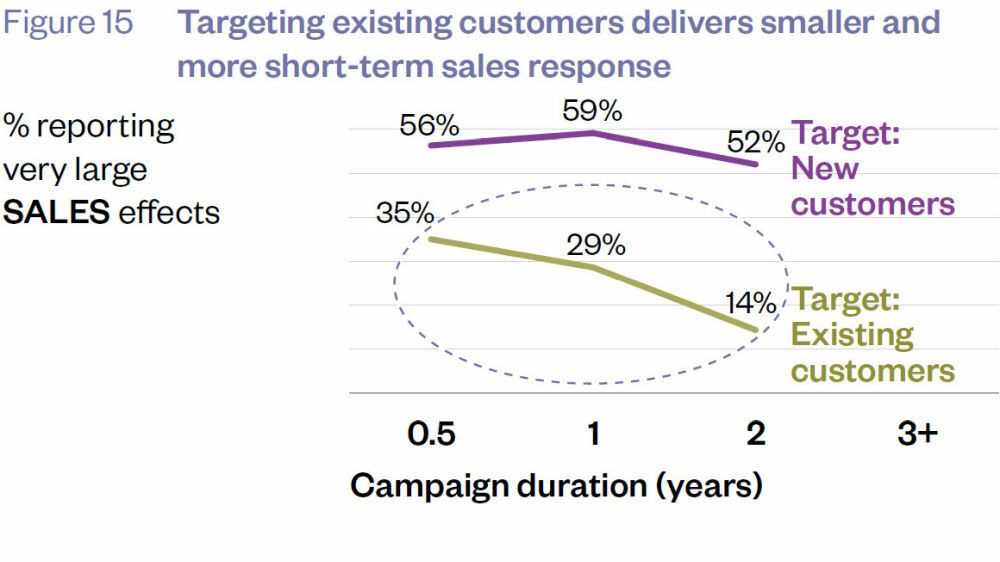 Source: How Brands Grow, Byron Sharp: Ehrenberg-Bass Institute for Marketing Science
Source: How Brands Grow, Byron Sharp: Ehrenberg-Bass Institute for Marketing Science
2. Balancing brand and activation
The need for quick results, which especially pleases your CFO, often leads to prioritizing activation / sales communication on social media. However, research by Binet and Field shows that short-term sales increases do not lead to long-term brand growth. If you want to build a brand that grows over the long term, you need to focus on increasing mental availability.
Even from the perspective of the buying cycle, it makes sense to combine activation and brand communication. Up to 95 % of the market (including your potential customers) currently (or at any randomly selected moment during the year) are not thinking about purchasing the selected product or service, and you have no chance to convert them into your customers. For them, you try to build the brand’s mental availability so that when the need arises, your brand is one of the first that comes to mind. The remaining 5 % of the market, who need your product right now, you try to persuade through sales communication.
What does this mean for your social media strategy? Divide resources between activation and brand communication, thus balancing short-term and long-term marketing goals. The ideal budget split between activation and brand varies between categories, but as a golden ratio averaged across market segments, it is 60:40 in favor of brand communication.
Source: The Long and the Short of it: Balancing Short and Long-Term Marketing Strategies, Les Binet & Peter Field
3. Distinctiveness, under all circumstances
According to current knowledge in marketing and consumer psychology, consumers actually do not distinguish much between one brand and another, and strong brand loyalty is often a fictional phenomenon. Larger brands compete with each other primarily for mental availability (who comes to mind first in a purchasing situation). Therefore, brands should not try so hard to convince consumers that they are better than the competition, but instead work on creating a stronger mental availability (everything that is associated with your brand in the consumer’s mind) than the competition.
In this regard, creativity in communication is crucial to overcome people’s indifference to ads. However, we also want to talk about brand elements here—visual or auditory elements that are uniquely associated with your brand and distinguish it from the competition. They facilitate the brand’s journey into the viewer’s mind, help improve its memorability amid a flood of advertising messages, and over time, help build mental availability. This could include a logo, slogan, jingle, colors, brand face, and more.
What does this mean for your social media strategy? Clearly define your unique brand elements (different from the competition) and use them consistently across all communication (not just social).
4. Shared perception of the brand
Strong brands are those that have their place in social culture and are perceived the same by all their members. According to Kevin Simler’s theory, advertising works through cultural imprinting – a collective understanding of what the brand means and what values it represents. Thus, brand building is not just about influencing individuals but also about creating a collective image of the brand that emerges from a given culture. Think of cultures in this context more in terms of interest groups or smaller subcultures on social media.
What does this mean for your social media strategy? Identify your culture (there may be more than one within your target group) and get to know it closely. Study its typical behavior, including the best insights and jokes.
The environment is changing, 4 brand-building tactics persist – almost
It might seem that digital simplifies and democratizes marketing communication; even with a smaller budget and without a hundred-page strategy, even small brands can find effective ways to build their mental availability. On the other hand, digital also brings a significant challenge that becomes even more pronounced over time (along with the growth of social platforms and the number of users registered on them).
The challenge is the decentralization of communication; simply put, digital takes some influence away from brands and gives it to communities. Brands thus transform from monolithic entities into a collection of scattered fragments, often lying outside their direct control. In such an environment, maintaining consistent communication and a coherent brand image becomes a significantly more complex task and requires a new interpretation and application of the four basic tactics for building a brand on social media.
The way forward: brand building of the future
Tactic: growth through market penetration (broad reach)
Challenge: Brands compete for user attention, which is increasingly becoming a scarce commodity. With the growing number of platforms and brands present on them, user attention steadily declines, and they become immune to advertising messages.
The way forward: Reach users through multiple contact points. Utilize a mix of different social platforms and their specific visual formats, which together work synergistically and support each other in creating mental availability.
Tactic: balancing brand and sales
Challenge: perceiving brand-building and activation as competitive activities that vie for the marketing budget and operate separately, if not oppositely. In this regard, there is an increasing push for quick results (also in connection with economic uncertainty) and a reluctance to invest in long-term brand-awareness, which will deliver results over the years.
The way forward: Apply the principles of marketing effectiveness, that is, the integration of brand and activation communication across the entire marketing funnel, so that they work synergistically. Specifically: testing, scaling, and analytics for brand communication; and conversely, storytelling and emotions in activation communication. Select effective formats and channels for both lines of communication. Utilize social commerce tools for activation.
Tactic: distinctiveness and brand elements
Challenge: For brands, it is increasingly difficult to maintain a consistent presentation in the environment of social networks, which also gives a strong voice to consumers and influencers. The brand image is no longer created just by what the brand itself says and how it presents itself, but also by what others say about it and how they present it.
The Way Forward: Ensure consistency in brand presentation using soft power—subtly guide consumers and influencers in the desired direction. Use product elements instead of brand elements.
Tactic: shared perception of the brand
Challenge: the rise of a huge number of smaller and very specific subcultures with which consumers identify.
The way forward: Identify your own subcultures to which the brand speaks and their typical cultural codes (language, insight jokes, aesthetics, etc.). Build brand communication based on these cultural codes and the values of the subculture.
Evil digital buzzwords
At times, it may seem that marketing is changing so quickly that what was true yesterday is no longer true today. However, it is really just an illusion. The same way the television or radio are not dead, neither is the consumer of 50+ of age – on the contrary, they are getting stronger and the disproportion between their purchasing power and their use for targeting advertising campaigns is getting weaker. Neither consumption habits nor patterns of buying behavior have died, nor have they fundamentally changed in many respects. The Top Four Dumb buzzwords came into the selection.
#DigitalFirst
Building your marketing strategy on the principle of digital first is like the first page of a detective story to reveal who the killer is. Instead of the word “digital”, mobile, social media and the likes can be less or more confusingly installed.
The choice of strategy and channel occurs only after you have decided which segment you target within the market you operate in and what your brand's position is against the target segment. An honest marketer will first find out what the situation is in a given market/category and if the skeleton is hidden in the supply-side closet. Subsequently, through research, the marketer identifies how a company or brand stands within a given category; prepares a marketing strategy in which he/she decides on what segment will he/she target and how the brand stands against the selected segment. Finally, he/she quantifies marketing goals, an example of a nicely set goal is to increase Brand preferences by 15% in the biomother segment by Q3 2020 and to match it with an estimated increment in sales. Ultimately, the time comes to decide whether and what ad platforms on Google or Facebook will you use.
Jumping on all the new and sparkly is exactly what advertising, in the newspeak parlance “technology”, giants want from the advertisers, but it often has nothing to do with what companies/brands really need.
The strategy, as a result, should be quite simply explainable for non-marketers. However, this does not change the need to make considerable efforts in its creation. The effectiveness of marketing communication, unfortunately, is dropping steadily and dividing communication on digital and non-digital contributes to this. As evidenced by the annual Effie show, the most successful campaigns are those integrated ones, which are based on a marketing strategy.
#Ads
Communication is just one of the components of marketing, and very often the least important one. If you have a quality product, the customer has no problem to get it, and at a price corresponding to quality, quite possibly with no communication bypass. Sure, with good advertising, it will go faster and you will outperform the business plan, but if communication is to compensate for the non-competitive component of the product/price/distribution, you'd better sharpen up. Someone who identifies themselves as a marketing specialist should be able to alert you to any shortcomings and work with them. However, it often happens that when you show your problem to a digital specialist, they suggest you campaigns in Google Ads. If you show the same thing to a social media specialist, they suggest addressing it via Facebook.
Usually, everyone considers themselves a marketing specialist, but not one usually understands anything beyond the servicing of their learned advertising platform. Communication will not save you and if product, price or distribution are getting jammed, the last thing the company needs is communication. Too much attention is being paid to debate over formats and channels. If someone describes themselves as a strategist and with a proud pre-label Digital, Social Media, SEO or PPC, there is no solution to the problem in sight.
So should companies ignore digital advertising? Sometimes yes, sometimes no. It depends on a lot of things that digital specialists don't know they don't know. In presentations from Facebook and Google, they simply don't know much else, and it's often their only marketing awareness. If business doesn't go as planned, communication and digital advertising may not help.
#Lovebrand
Customers do not have an emotional relationship with brands and do not create romantic ideas about them. The vast majority of consumers don't care about brands, and if a majority ceased to exist over night, only 19% of consumers would mind.
Even those brands that are considered to be lovebrands, tend to have a low proportion of their sales generated by the most loyal group of customers. Byron Sharp reports that for the Harley Davidson brand it is less than 10%. The level of loyalty to the brand is then much more significantly linked to market penetration, the larger the market share, the greater the loyalty to the brand. The emotional attachment to the brand didn't change much about the results. The excess of communication activity towards heavy buyers and the neglect of communication towards non-customers then leads to a falling market share.
A classic example of an inappropriate approach to targeting is reaching out to fans on your Facebook page for engagement, which has been refuted many times by Facebook itself.
A strong brand is among the most important goals of and for every marketer and the ultimate mission of advertising is creating strong brands. However, you need to keep your feet firmly on the ground and not to create irrational ideas about the behavior and motivations of customers. Each brand should strive to achieve the highest possible values in standardized brand metrics. Anything beyond that belongs in the realm of illusions.
#ROI
ROI is a metric that gives a nice picture of efficiency. But, as a rule, it provides a poor idea of the effectiveness of marketing endeavors. In terms of approaches, the ROI is equivalent of performance marketing, which generates quick results, gives an illusion of cheapening of the marketing investment, and creates the impression that funds are invested efficiently. Unfortunately, this is only true in the short term. In the long run, both an over-oriented ROI metric and performance marketing are both highways to hell. As anywhere else, a quick and easy way is usually the least suitable. Deciding purely on the basis of ROI metrics leads to short-term goals that will destroy the company and the brand, in the long run.
Is there a light at the end of the tunnel?
Byron Sharp compared the situation in marketing to medicine in the Middle Ages – bloodletting had been a common practice for several centuries. Similarly, today in marketing, practices that do not rely on empirical knowledge are tested, and in the field there are active people who do harm to it and actually do not even have the qualifications for the performance of the profession. On the other hand, companies that don't pop up on buzzwords, understand the marketing craft, and don't get themselves bamboozled, get even better results then. And that's not a bad vision.



